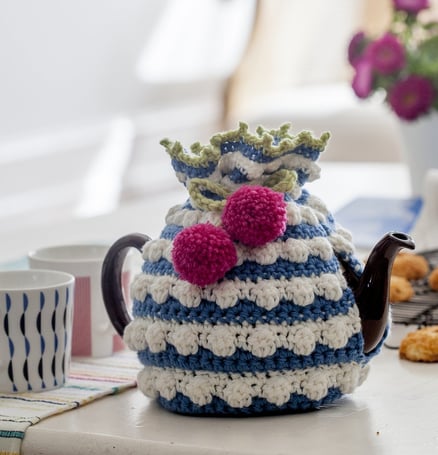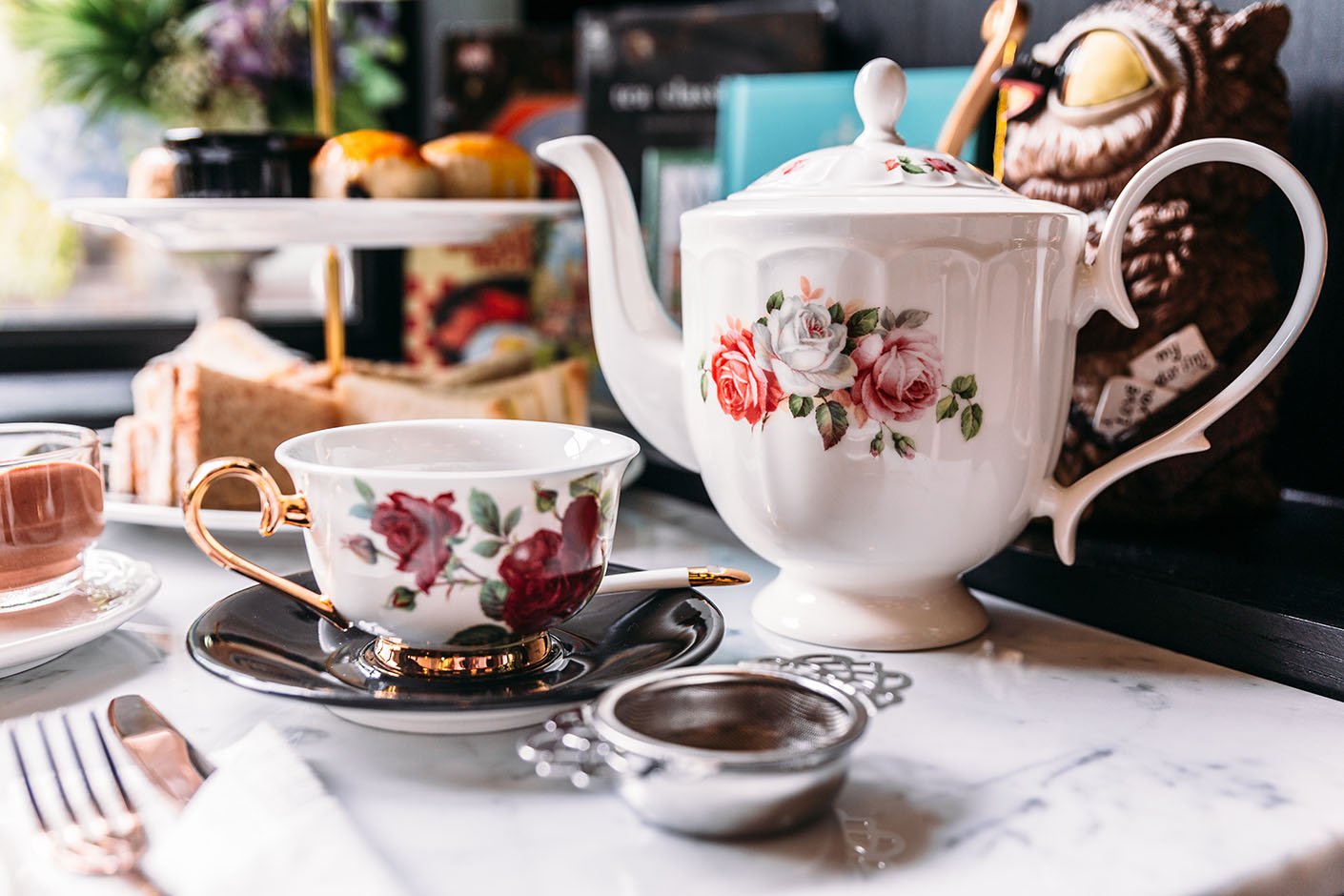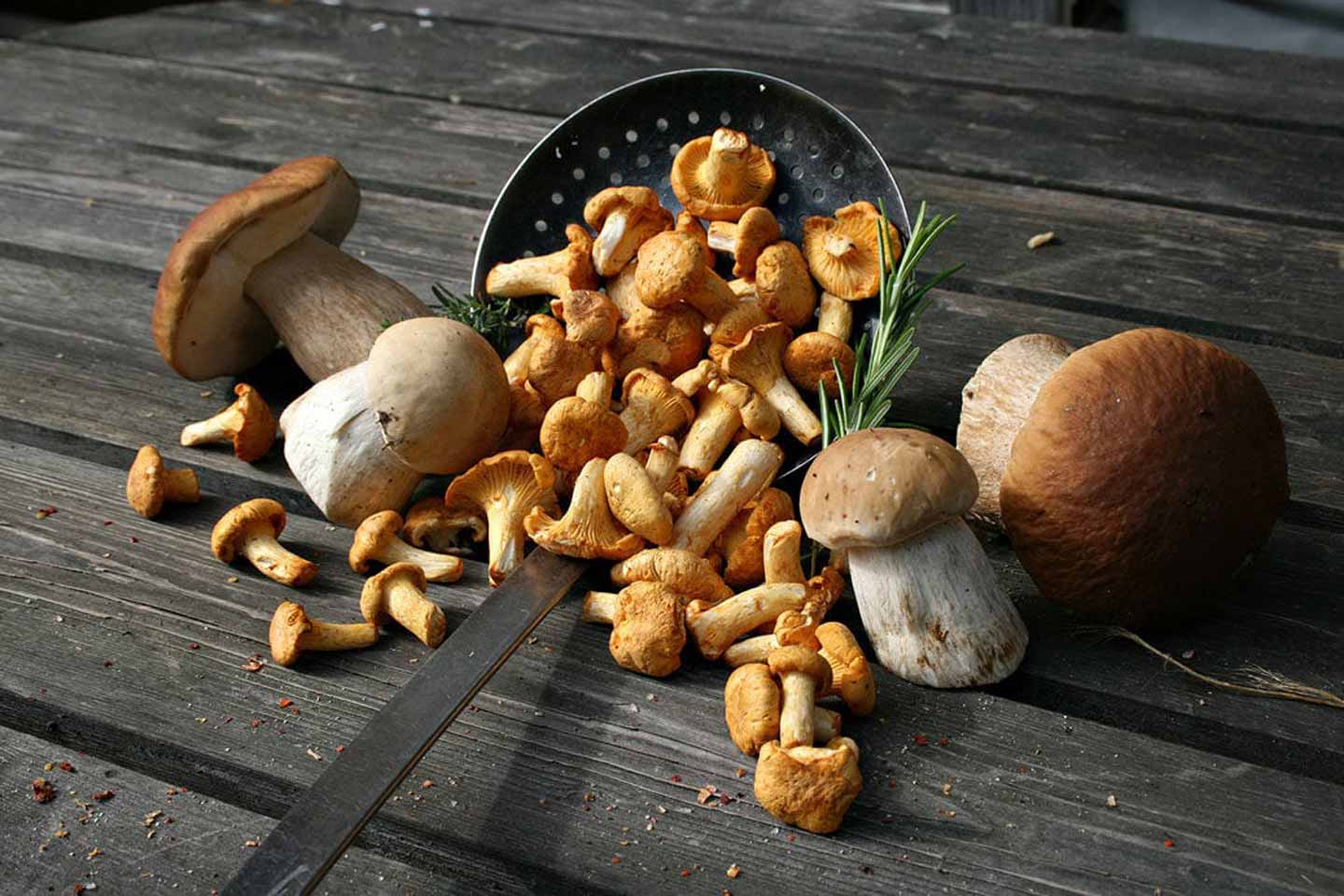A Brit: “Would you like a cup of tea?”<
An Italian: “Why, do I look unwell?”
Italians do not drink tea
Born and raised in an Italian household in London, I didn’t come into contact with the empire-building beverage until I was 18 and at university in a different town. At home, I’d only ever woken up to the magnificent smell of Moka-brewed arabica coffee. There were no such exotic smells in the morning in my student flat-share in the Midlands, just a sinister mass of squashed black teabags clogging up the kitchen sink that smelled a bit musty.
A cup of tea for the average Italian - usually a bright yellow chamomile infusion - is something offered by your grandmother when you’re coming down with a bad cold or indigestion. Alternatively, asking for tea in Italy means being served the iced peach and lemon variety industrially made by brands like Liptons. You’re even hard pushed to find a kettle in a cucina italiana, whereas a UK kitchen is considered incomplete without one.
In Blighty, tea is the balm that soothes all the woes and discord imaginable to mankind. It takes on the role of central heating in all that damp weather. If you’ve had an argument with a Brit and they suddenly ask you “Fancy a cup of tea?”, you know that they are ready to patch things up. Fall over and break your leg, before calling an ambulance your British neighbor will have put the kettle on. English grannies do not just knit wooly hats and scarves, they produce an essential item for the tea pot: the tea cosy.

A tea cosy (Image credits: MAKEetc.)
What follows is a personal and factual journey all around the fascinating background and properties of tea. How did the Brits claim it? What’s the difference between Earl Grey, Assam and Darjeeling? Does tea contain caffeine? What are polyphenols and why can’t I get through the day without those biochemical compounds coursing through my blood stream?
Tea origins
Wikipedia tells us: According to legend, tea was first discovered by the legendary Chinese emperor and herbalist, Shennong, in 2737 BCE. It is said that the emperor liked his drinking water boiled before he drank it so it would be clean. One day, on a trip to a distant region, he and his army stopped to rest. A servant began boiling water for him to drink and a dead leaf from the wild tea bush fell into the water. It turned a brownish color, the emperor drank it and found it very refreshing and cha (tea) came into being.
Nearly all types of tea are made with leaves from the Camellia Sinensis plant, originally found in China and Southeast Asia. Today, the tea plant is cultivated across the world in tropical and subtropical regions, and – no surprise – it has even made its way to parts of the UK.
China is considered to have the earliest records of tea drinking dating back to the first millennium BC. The Han Dynasty used tea for medicinal purposes, whereas a few centuries later, the Tang Dynasty drank tea for pleasure on social occasions. It was the 9th century when tea crossed over from China to Japan, influencing Buddhist ceremonies and rituals. Tea was later introduced to Europe by Dutch and Portuguese merchants during the 16th century.
Tea and the British
In 1662, the Portuguese Princess Catherine of Braganza married Charles the second and brought with her a casket of tea, her preferred beverage, thereby, rather unwittingly, setting off a national craze among British royalty and the aristocracy.
The British went on to plant tea on a large scale in India a century later. By 1820, the British East India Company had begun large-scale tea production in the Indian regions of Assam and Darjeeling thanks to the introduction of the Chinese plant (secretly stolen by a certain Robert Fortune who brought over not just the seeds but also experienced tea workers from China). The leaves grown on Indian soil came out bigger and had a stronger brewing capacity than those grown in China.
Indian-grown tea proved extremely popular in Britain. It was considered a patriotic product of the empire and was often brewed to its strongest capacity to provide vigor and fortitude. Whereas Chinese-grown tea was considered insipid and watery, the lower price and greater strength of the Indian leaves was much appreciated, it also welcomed the association of addition ingredients, probably rooted in the Indian tradition of adding spices, milk and sugar to make ‘chai’.
It's also worth noting that the question of milk had been introduced by the aristocracy as a way of cooling down the tea’s temperature to avoid the fine-bone china cups from breaking.
Tea had been considered a high-status drink when first introduced, but the steady fall in price led to increased popularity among the British working class, whose production output was said to be increased by the warming and energetic properties contained in the strong brew. The Temperance Movement promoted tea-drinking in the early 19th century as an alternative to gin, which for centuries had been a serious health and social problem among the poorer classes. Lastly, it was noted that the rather dry, poor-quality food available at the time was helped down by a sweetened and milky cup of cha at every meal.
By the end of the 19th century, big brands such as Lyons, Liptons and Twinings dominated the market, tea was undoubtedly the preferred drink for all classes during the Victorian era. Today, British tea consumption has declined due to the popularity and availability of exotic coffee varieties and herbal teas, but the good ol’ cup of tea remains much loved drink and is still ingrained in British culture and society.
Tea oxidation
Oxidation is the process where camelia sinensis leaves are exposed to air in order to dry and darken, affecting the flavor, aroma and strength of the leaf, (very similar to fruit turning brown). The amount of time that the leaves are left to oxidize determines the type of chemical composition of the tea, i.e. very dark brown leaves are the result of full oxidation and are used to produce the black tea, popular in India and Britain. Tea leaves that are partially oxidized or not at all produce a lighter, greener color and are used for teas that require less brewing: green and white teas.
What will you learn when following a Culinary Arts curriculum?
Discover the world of restaurant management
and turn your passion for food into a successful business.
Tea categories
Black
Single, unblended black teas are usually named after the regions where they are grown, e.g. Assam, Darjeeling, Yunnan, Ceylon, Keemun. Black teas are fully oxidized, resulting in a dark, rich cup of tea that is quite high in caffeine and strong chemical compounds. The leaves are often macerated during the oxidation process, allowing all parts of the tea leaves to be exposed to air and fully darken. Because of their full oxidation and robust body, black teas pair well with milk, sugar, oils and spices.
Hence flavored black teas such as Earl Grey (enhanced by the oil of the citrus bergamot fruit), Masala Chai (based on aromatic Indian spices that include fresh ginger, cardamom pods, cinnamon, cloves and peppercorns) and Lapsang Souchong (tea leaves that are dried over a pinewood fire resulting in a deep, dark, smokey taste). The famous English Breakfast blend is a mix of Assam, Ceylon and Kenyan black teas that was, ironically, concocted in Scotland for Queen Victoria during one of her visits to Balmoral Castle.
Oolong
Oolong teas are partially oxidized which puts them somewhere between black and green teas, and have a variety of flavor characteristics depending on their level of oxidation. Many oolongs are processed into a distinctive shape in which whole tea leaves are tightly rolled into small balls which gradually unfurl as the leaves are steeped in hot water. Because of this particular shape, many oolong teas can be infused multiple times, offering subtle differences of flavor with each successive infusion.
Green
Green tea leaves are typically lighter in color, reflecting the original green leaves after harvest. They are largely unoxidized and undergo a heating process soon after harvesting in order to halt oxidation, resulting in a lighter, more mellow cup of tea. Chinese green teas are typically pan-fired in order to halt oxidation, while Japanese green teas are typically steamed. Gunpowder, Matcha, Sencha and Dragon Well are just some of the many varieties of green tea to come out of China and Japan, their differences lie in production techniques and exposure to light. Green tea goes particularly well with mint and is one of the most popular drinks consumed in North African countries like Morocco.

White
White teas undergo a very small amount of oxidization and are composed of the finest downy buds and tips of the tea plant, which makes them particularly prized. These teas have a delicate floral character and, unlike other teas, are very high in antioxidants the longer they are brewed.
Pu-erh
Unlike other teas made from the camellia sinensis plant, pu-erh teas are unique in that they are fermented and aged. While oxidation refers to the exposure of teas to air, fermentation refers to an aging process where tea leaves are broken down by microbial activity. Pu-erh teas are aged from a few months to several years and develop a distinctive rich, earthy taste.
Tea’s chemical composition
It’s handy to have a PhD in Chemistry to fully grasp the amount of biochemical compounds found in tea; no wonder it is often referred to as “the master of chemical diversity”! The most important compounds in fresh tea leaves are polyphenols, antioxidants (thearubigins, epicatechins and catechins), amino acids, enzymes, pigments, carbohydrates, methylxanthines (caffeine, theobromine, theophylline), minerals and many volatile flavor and aroma compounds. Keep up!
Polyphenols, which include flavonoids and tannins, are the largest group of compounds in tea. They provide that slightly bitter, astringent taste - which for me is where the tea addiction lies - while also providing color and flavor. Tea is also full of antioxidant properties, (substances that protect or reduce cell damage caused by free radical molecules).
A K Barooah, Director of the Tocklai Tea Research Association, in India confirms:
Tea can be considered a functional food due to its high antioxidant value.The catechins, theaflavins, thearubigins and polysaccharides present in tea are found to have medicinal value, and the most exciting findings on health aspects are due to tea’s anti-carcinogenic, anti-diabetic and anti-hypertension activity.<
Herbal tea
Strictly speaking, herbal tea is not really tea at all since it is not made from camellia sinensis leaves, but is more of an infusion or tisane made of fruit, leaves, bark and other parts of specific plants. Some herbal teas have long been used as natural remedies for common maladies, such as chamomile, sage or mint to soothe an upset stomach. Rosehip tea, made from the seedpods of roses, has a tangy flavor and provides vitamin C. Most herbal teas do not contain caffeine and are high in antioxidants, e.g.lemon balm, scarlet pimpernel and sweet basil.
The tea kick
Unlike coffee whose caffeine count is considerably high (between 60-90 mg per cup), tea only contains on average 30-50 mg of caffeine, depending on the leaf and brewing time. Hence, the adrenaline “kick” one gets from tea is much softer compared to the sharp high that coffee often produces. Personally speaking, I find the softer curve of alertness that I get from tea actually lasts longer and comes down more gently than the quick coffee fire-cracker peak that quite soon has you crashing back down to earth, requiring … guess what … another coffee.
Nigel Melican, managing director of Teacraft, states “What is unique is that both the caffeine and theanine contained in tea have the synergistic and balancing effect of stimulating and relaxingat the same time. Caffeine stimulates and wards off drowsiness, but theanine induces a relaxed alertness that reduces mental anxiety and creates a sense of wellbeing by increasing the brain’s production of gamma-amino butyric acid and promoting alpha brainwave activity ”.
Tea is certainly kinder on the nervous system. It represents a longer-lasting beverage that also serves as a hand warmer on a winter’s day and a wonderful way of raising the body’s temperature. Coffee is a quick and luxurious treat with a deep, silky, almost sexy flavor, whereas tea is more of a sober, constant companion that lasts longer as an experience and, in my opinion, has you running around being efficient for longer. I know which one I would not be able to live without on my desert island… despite my Italian genes.
How to make a proper British-style cup of tea
(Basic premise: Use a high quality black tea. Making a pot rather than a mug or cup ensures better flavor because the tea has more room to expand in. Loose leaf tea is generally considered superior in quality than a tea bag, although there are many good quality, organic tea bags on the market).
- Use freshly drawn water from the tap that’s been left running for a few seconds, this means the water is nicely aerated. Make your tea from water that’s only been boiled once, this keeps the oxygen level up and enhances the tea’s flavor. Bring the water to what is known as a “rolling boil”.
- Use some of the boiled water to warm the pot. Then add teaspoons of loose leaf tea based on the following logic: one per person, plus one for the pot. Make sure the tea is in the pot BEFORE the water goes in.
- Pour in the water and leave to stew for 4/5 minutes. Nothing good comes from tea made in a hurry. Avoid over stirring, let the leaves expand and stir just once at the beginning and again at the end. If using a tea bag, do not assume that squeezing the life out of it is a good idea, it actually brings out the bitterness in the tea more than anything else.
- Milk and sugar? Too personal for anyone to comment on, but generally speaking it’s strong, full bodied black tea that suits the extra embellishments. Do not expect find the answer here as to whether the milk should go in before or after the tea - that argument has been raging for centuries and still remains an enigma. The only logic that upholds pouring the milk in first is if you want to save your porcelain cups from cracking.
- For a really regal experience, serve the tea in fine-bone china tea cups with accompanying saucer. Apparently, traditional good manners from the court of Princess Catherine dictate that the saucer should be held around chest level with the tea cup poised on it between delicate sips. The sticking out of one's little finger is optional.
References:
https://teaepicure.com/tea-chemistry/
http://www.blackteaworld.com/types-of-black-tea.html





